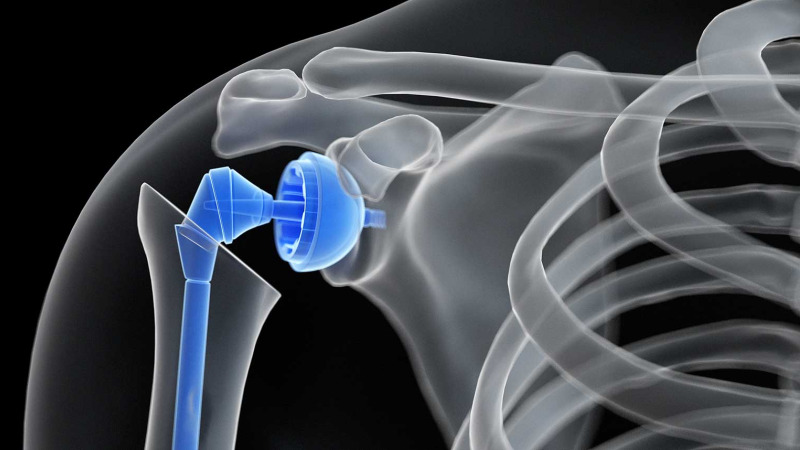Shoulder Replacement Surgery: Overview
Shoulder replacement surgery, also known as shoulder arthroplasty, is a surgical
procedure designed to replace a damaged or diseased shoulder joint with an
artificial joint, or prosthesis. This procedure is typically recommended for
individuals experiencing severe shoulder pain and loss of function due to
conditions such as osteoarthritis, rheumatoid arthritis, or traumatic injury.
Types of Shoulder Replacement:
- Total Shoulder Replacement: In this procedure, both the ball and
socket of the shoulder joint are replaced with prosthetic components.
- Partial Shoulder Replacement (Hemiarthroplasty): Only the ball of the
shoulder joint is replaced with a prosthesis. This is often done in cases
where the socket is still healthy.
- Reverse Shoulder Replacement: This procedure is designed for
individuals
with a severely damaged rotator cuff. In a reverse shoulder replacement, the
positions of the ball and socket are switched, which allows other shoulder
muscles to take over the function of the damaged rotator cuff.
Candidates for Shoulder Replacement:
Candidates for shoulder replacement surgery typically experience:
- Severe shoulder pain that limits daily activities.
- Significant loss of shoulder function.
- Ongoing pain despite conservative treatments like medications and physical
therapy.
Procedure:
During the surgery:
- Anesthesia: The patient is given either general anesthesia or
regional
anesthesia to numb the arm and shoulder.
- Incision: A surgical incision is made to access the shoulder joint.
- Removal of Damaged Tissue: The damaged portions of the shoulder joint
are
removed.
- Implant Placement: The artificial joint components are securely
implanted
into the bone.
- Closure: The incision is closed, and the patient is monitored as they
recover from anesthesia.
Recovery and Rehabilitation:
Following surgery, patients undergo a rehabilitation program to regain strength
and mobility. Physical therapy is a crucial part of the recovery process,
helping individuals gradually return to normal activities.
Benefits:
The primary benefits of shoulder replacement surgery include:
- Pain Relief: Most patients experience significant pain relief after
the
procedure.
- Improved Function: Restoration of shoulder joint function, allowing
for
improved range of motion and daily activities.
Conclusion:
Shoulder replacement surgery is a proven and effective intervention for
individuals suffering from debilitating shoulder conditions. Consultation with a
healthcare professional is essential to determine if this procedure is the right
course of action based on an individual's specific circumstances and medical
history.
